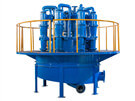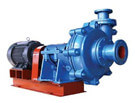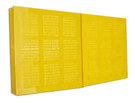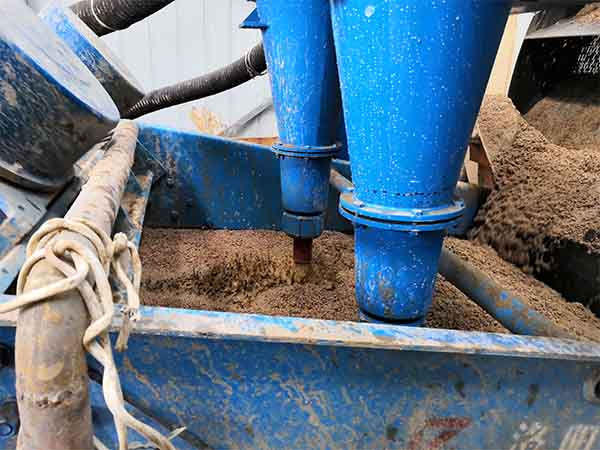Hot Product

- Hydrocyclone Group
Hydrocyclone group is widely used in coal preparation plant...

- Slurry Pump
Slurry pump is mainly used in mining, power plant, dredging, metallurgy...

- Polyurethane Dewatering Screen Panel
In addition to the performance of...
Cyclone Separator Components
Date: 2022-05-26 From: Longding Author: admin
The cyclone is a conical vessel with a cylindrical section. The cylindrical part of the upper part of the cone is the feeding chamber, and a tangential pulp inlet is installed on the outer side. The lower part of the cone is an opening, the diameter of which is adjustable and is used for solid-phase particle discharge. There is a downwardly inserted overflow pipe in the top center of the closed vertical cylinder and extends below the tangential position of the pulp inlet. The structure of the cyclone is specifically composed of a cylinder, a cone, a slurry feeding pipe, an overflow pipe, and a sand settling pipe.
1. Cylinder. The size of its inner diameter represents the nominal size of the cyclone.
2. Cone. The cone plays the role of separation, and the cone angle is generally 15º-20º.
3. Feed pipe. The drilling fluid to be separated thus enters the cyclone. In order to improve the motion state in the cyclone, improve the separation effect. The structure of the cyclone feed tube has various forms.
4. Overflow pipe. The treated drilling fluid flows back to the drilling fluid circulation system through the overflow pipe. In order to prevent the drilling fluid from overflowing directly in the cylinder, its depth should extend to the position of the cone of the cyclone.
5. Sand sink. The recovered solid particles are discharged from the grit chamber. In order to improve the underflow of the cyclone and improve the separation effect, the diameter of the underflow port of the sand settling tube is adjustable.
Generally, the shell of the cyclone is made of cast iron, and the interior is lined with wear-resistant rubber to prolong its service life. Some integral shells are made of polyurethane material, which is both wear-resistant and corrosion-resistant. For large-sized cyclones, the shell is made of aluminum alloy and the interior is lined with polyurethane, which not only ensures sufficient strength of the shell but also reduces the weight. According to the actual situation of the site, the processing capacity can be increased by installing an appropriate number of cyclone groups to meet the needs of maintaining the performance of all drilling fluids in the entire drilling system.
Classification and working characteristics of cyclones
The separation capacity of the cyclone is related to the diameter of the cyclone. The diameter of the cyclone refers to the inner diameter of the cylinder on the upper part of the centrifugal cone. The smaller the diameter, the smaller the particles that can be separated. According to the different diameters, the cyclone is divided into three categories: desander, desilter, and micro cyclone.
Previous:Adjustable Parameters of The Hydrocyclone Separator
Next:Structural Characteristics of Dewatering Screen Components
Leave a Message
Here you can submit any questions and we will get back to you as soon as possible. We will not disclose the information you submit to anyone, please rest assured.



Inquiry